
Aesop's Fables, or the Aesopica, is a collection of fables credited to Aesop, a slave and storyteller who lived in ancient Greece between 620 and 564 BCE. Of varied and unclear origins, the stories associated with his name have descended to modern times through a number of sources and continue to be reinterpreted in different verbal registers and in popular as well as artistic media.

The Ant and the Grasshopper, alternatively titled The Grasshopper and the Ant, is one of Aesop's Fables, numbered 373 in the Perry Index. The fable describes how a hungry grasshopper begs for food from an ant when winter comes and is refused. The situation sums up moral lessons about the virtues of hard work and planning for the future.

The Monkey and the Cat is best known as a fable adapted by Jean de La Fontaine under the title Le Singe et le Chat that appeared in the second collection of his Fables in 1679 (IX.17). It is the source of popular idioms in both English and French, with the general meaning of being the dupe of another.
A wolf in sheep's clothing is an idiom from Jesus's Sermon on the Mount as narrated in the Gospel of Matthew. It warns against individuals who play a duplicitous role. The gospel regards such individuals as dangerous.
Laurentius Abstemius, born Lorenzo Bevilaqua, was an Italian writer and professor of philology, born at Macerata Feltria; his learned name Abstemius, literally "abstemious", plays on his family name of Bevilaqua ("drinkwater"). A Neo-Latin writer of considerable talents at the time of the Humanist revival of letters, his first published works appeared in the 1470s and were distinguished by minute scholarship. During that decade he moved to Urbino and became ducal librarian, although he was to move between there and other parts of Italy thereafter as a teacher.

Belling the Cat is a fable also known under the titles The Bell and the Cat and The Mice in Council. In the story, a group of mice agree to attach a bell to a cat's neck to warn of its approach in the future, but they fail to find a volunteer to perform the job. The term has become an idiom describing a group of persons, each agreeing to perform an impossibly difficult task under the misapprehension that someone else will be chosen to run the risks and endure the hardship of actual accomplishment.

The Bear and the Travelers is a fable attributed to Aesop and is number 65 in the Perry Index. It was expanded and given a new meaning in mediaeval times.
The Two Pigeons is a fable by Jean de la Fontaine that was adapted as a ballet with music by André Messager in the 19th century and rechoreagraphed to the same music by Frederick Ashton in the 20th.
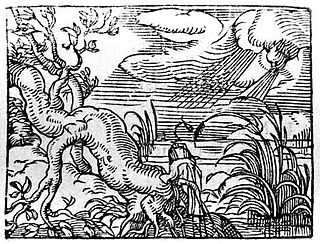
The Oak and the Reed is one of Aesop's Fables and is numbered 70 in the Perry Index. It appears in many versions: in some it is with many reeds that the oak converses and in a late rewritten version it disputes with a willow.
Still waters run deep is a proverb of Latin origin now commonly taken to mean that a placid exterior hides a passionate or subtle nature. Formerly it also carried the warning that silent people are dangerous, as in Suffolk's comment on a fellow lord in William Shakespeare's play Henry VI part 2:
The Hawk and the Nightingale is one of the earliest fables recorded in Greek and there have been many variations on the story since Classical times. The original version is numbered 4 in the Perry Index and the later Aesop version, sometimes going under the title "The Hawk, the Nightingale and the Birdcatcher", is numbered 567. The stories began as a reflection on the arbitrary use of power and eventually shifted to being a lesson in the wise use of resources.
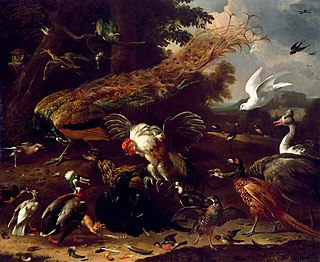
The Bird in Borrowed Feathers is a fable of Classical Greek origin usually ascribed to Aesop. It has existed in numerous different versions between that time and the Middle Ages, going by various titles and generally involving members of the corvid family. The lesson to be learned from it has also varied, depending on the context in which it was told. Several idioms derive from the fable.

Jean de La Fontaine collected fables from a wide variety of sources, both Western and Eastern, and adapted them into French free verse. They were issued under the general title of Fables in several volumes from 1668 to 1694 and are considered classics of French literature. Humorous, nuanced and ironical, they were originally aimed at adults but then entered the educational system and were required learning for school children.
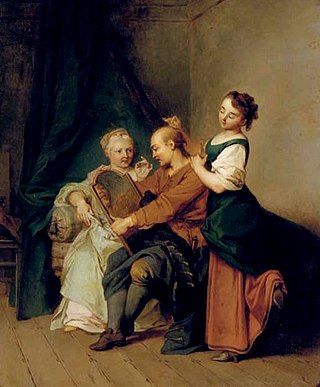
The Man with Two Mistresses is one of Aesop's Fables that deals directly with human foibles. It is numbered 31 in the Perry Index.
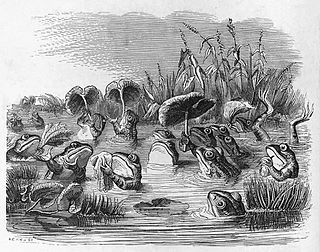
The Frogs and the Sun is one of Aesop's Fables and is numbered 314 in the Perry Index. It has been given political applications since Classical times.

The Heron and the Fish is a situational fable constructed to illustrate the moral that one should not be over-fastidious in making choices since, as the ancient proverb proposes, 'He that will not when he may, when he will he shall have nay'. Of ancient but uncertain origin, it gained popularity after appearing among La Fontaine's Fables.
The situation of the Eagle Wounded by an Arrow vaned with its own feathers is referred to in several ancient Greek sources and is listed as fable 276 in the Perry Index. It is generally applied to the misery of realising that one has contributed to one's own injury but also as a warning against self-reliant pride.
There are no less than six fables concerning an impertinent insect, which is taken in general to refer to the kind of interfering person who makes himself out falsely to share in the enterprise of others or to be of greater importance than he is in reality. Some of these stories are included among Aesop's Fables, while others are of later origin, and from them have been derived idioms in several languages.
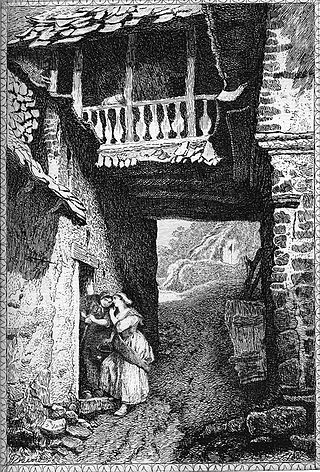
The women and the secret is a sly fable by La Fontaine (VIII.6), based on a piece of Late Mediaeval misogynistic humour relayed by Laurentius Abstemius.

The Kite and the Doves is a political fable ascribed to Aesop that is numbered 486 in the Perry Index. During the Middle Ages the fable was modified by the introduction of a hawk as an additional character, followed by a change in the moral drawn from it.













